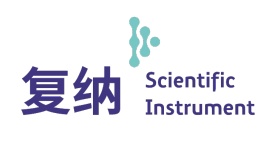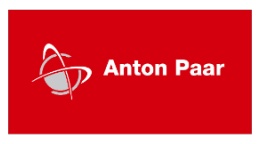方案详情文
智能文字提取功能测试中
Quantitative Analysis of SmallMetal Fragments by LA-ICP-MS Introduction A number of well-established techniques, including sparksource optical emission spectrometry (SSOES) and X-rayfluorescence (XRF), deliver accurate, precise and relativelyfast analysis of steels, typically providing analysis of anarea of several cm2. Both techniques require samples of acertain shape, a minimum size and particular surfacepreparation qualities. In most cases, analyses at the cmscale are perfectly acceptable and the provision of therequired sample geometry presents no problem. There are,however, a number of situationsinwhichtheserequirements can not be met: · Analysis of small features or inclusions ·Analysis of fragments / millings / turnings ·Forensic applications · Failure analysis of specific sample zones ·Composition changes-small sample areas Laser Ablation Inductively Coupled Plasma MassSpectrometry (LA-ICP-MS) is able to generate analysesfrom any size or shape of sample. This study shows thepower of the technique too analyse very small andirregularly shaped sample sizes, using certified referencematerials in the form of millings/turnings, as“unknown”samples. Calibration Instrument calibration was achieved using 8 flat geometrysteel setting-up samples (BAS UK), typically“certified” to 2or 3 significant figures. Pieces cut from all 8 samples weremounted together in the ablation cell (Figure 2). Ablation positionss were defined on each piece andcalibration data were acquired from all pieces in anunattended procedure. The samples included low-alloy andhighly-alloyed steels. Some elements varied from ppmlevels to high % levels (e.g. Cr). Fe content varied from 61%to 99%. In this challenging application, reference wasmade to aniinternal standard element (Fe) duringcalibration, but not during the analysis of samples. Closeattention was paid to the use of identical laser ablationconditions for all standards and all samples, to ensure thatinstrumentt rresponse was as uniform as possiblethroughout. Bulk Sample Analysis Having calibrated the instrument, the setting-up sampleswere re-analyzed as unknowns. As expected, analyticalvalues were close to the reference values, as may be seenin Table 1. Figure 1. Four calibration curves for trace-to-major element content. Al, Si andP were chosen as examples of “less easy"elements. Many alloying elementsshow the correlation illustrated by the Cr curve. All calibrations were linear -an important characteristic of mass spectrometry, compared with SSOES. Small pieces of a certified reference material (NBS) wereused to assess the ability of this technique to analyze verysmall samples. The largest dimension of each sampleturning was of the order of a few millimetres and thethickness was usually of the order of a few hundredmicrons (a couple of hair thicknesses). Figure 2. Eight BAS steel samples in the ablation cell Al P Cr Nb Mo Sn Sample Cert. LA Cert. LA Cert. LA Cert. LA Cert. LA Cert. LA Cert. LA A/8 .04 .04 .005 .01 .005 .001 .02 .03 01 N/D .005 .002 .005 .001 D/11 .019 .19 .01 .02 .12 .11 3.0 3.1 .05 .05 1.3 1.3 .01 .01 C/17 .05 .05 .07 .08 .42 .42 .18 .20 .02 .03 .11 .11 .06 .07 H/5 .20 .16 .04 .06 .33 .33 1.3 1.1 .11 .09 .42 .45 .03 .03 G/5 .005 .006 .03 .04 .06 .07 16.5 12.9 .005 .003 2.2 2.2 .01 02 E/4 .03 .04 .01 .02 03 .04 4.3 3.6 1.1 1.2 .97 .98 - .002 B/6 .01 .02 .005 .01 .01 .01 1.2 1.2 .005 .006 .20 .21 .01 .01 F/4 .005 .004 .02 .03 .05 .05 25.5 23.4 .005 .001 3.5 3.4 .01 .01 Sample ID Al Si Mn Ni Cr V Mo Cu Sn Ref .057 .625 1.11 .565 .96 .265 1.41 .24 .007 SS5Bulk Sample .065 .70 1.05 .61 .98 .25 1.28 .24 .007 S.D. .006 .028 ..057 .036.052 .014 .073 .014<.001 NBS Ref 1.55 1.80 1.03 1.15 - - D33 Sample .37 1.59 1.66 1.1 1.2 .003 .02 .09 .01 Milling S.D. .015 .017 . .030 .010.011<.001 <.001.003<.001 For proper analysis, depth penetration rate and samplingtime should be coordinated to avoid penetration of verythin samples. The pre-ablation perioddwasthereforelimited to a few seconds to preserve the sample integrity. Small samples such as these require mounting to preventthem moving under the acoustic shock of each laser pulseand so they were presented to the laser chamber onpressed boric acid mounts. Preparation of the mounts wasvery simple. The turnings were placed in the bottom of acompression die and boric acid powder was added on top.This was compressed,resulting in a firm boric acid pelletwith the steel turnings exposed for ablation at one of itscircular surfaces (Figure 3). USAJapanTaiwanEuropeChinaNew Wave ResearchNew Wave ResearchNew Wave ResearchNew Wave ResearchNew Wave Researcha division of esia division of esia division of esi.a division of esia division of esi48660 Kato Blvd.Pierwest Square Northwing 2F2FI., No.58-3, XingShan Road8 Avro Court, Ermine Business ParkRoom 1701~1702, Information Tower,Fremont CA 94538-71339-11-8 Tsukuda, Chuo-kuNeihu Dist..Huntingdon,Cambs,No.1403 Min Sheng Road,United States of AmericaTokyo, 104-0051TaipeiPE29 6XSPudong, Shanghai,ChinaTel:+1 510-249-1550JapanTaiwan 114 ROCUnited KingdomP.R.C. 200135Tel:+1 800-566-1743Tel: +81-3-3533-8444Tel: +886-2-8792-7585Tel: +44 1480 456566Tel: +86 21 3392 7070Fax: +1 510-249-1551Fax: +81-3-3533-8443Fax:+886-2-8792-7584Fax:+44 1480 456545Fax: + 86 21 5237 1289Email: lasers@new-wave.comEmail:newWaveKK@new-wave.comEmail: NewWaveGC@new-wave.comEmail:NewWaveEU@new-wave.comEmail: NewWaveCN@new-wave.com Summary Many small sample geometries may be analyzed by LA-ICP-MS with accuracy and precision independent of sampleform. Sample preparation is minimal and any shape ofsample may be simply mounted for presentation to thelaser sampling system. Acknowledgements Dr. Walter Grillo and Dr. Massimo GodanoFiat, Turin, Italy 这两种技术都要求样品具有一定的形状、最小的尺寸和特定的表面处理质量。在大多数情况下,cm尺度的分析是完全可以接受的,提供所需的样品几何形状没有问题。但是,在一些情况下,这些要求是不能满足的:•小特征或小内含物分析•碎片/研磨/回转的分析•法医应用程序•特定样本区域的失效分析•组成变化-小样本区域激光消融电感耦合等离子体质谱(LA-ICP-MS)能够从任何大小或形状的样品中产生分析。这项研究显示了该技术的力量,分析非常小和不规则形状的样本大小,使用认证的参考材料的形式的磨削/车削,作为“未知”的样本。
关闭-
1/2
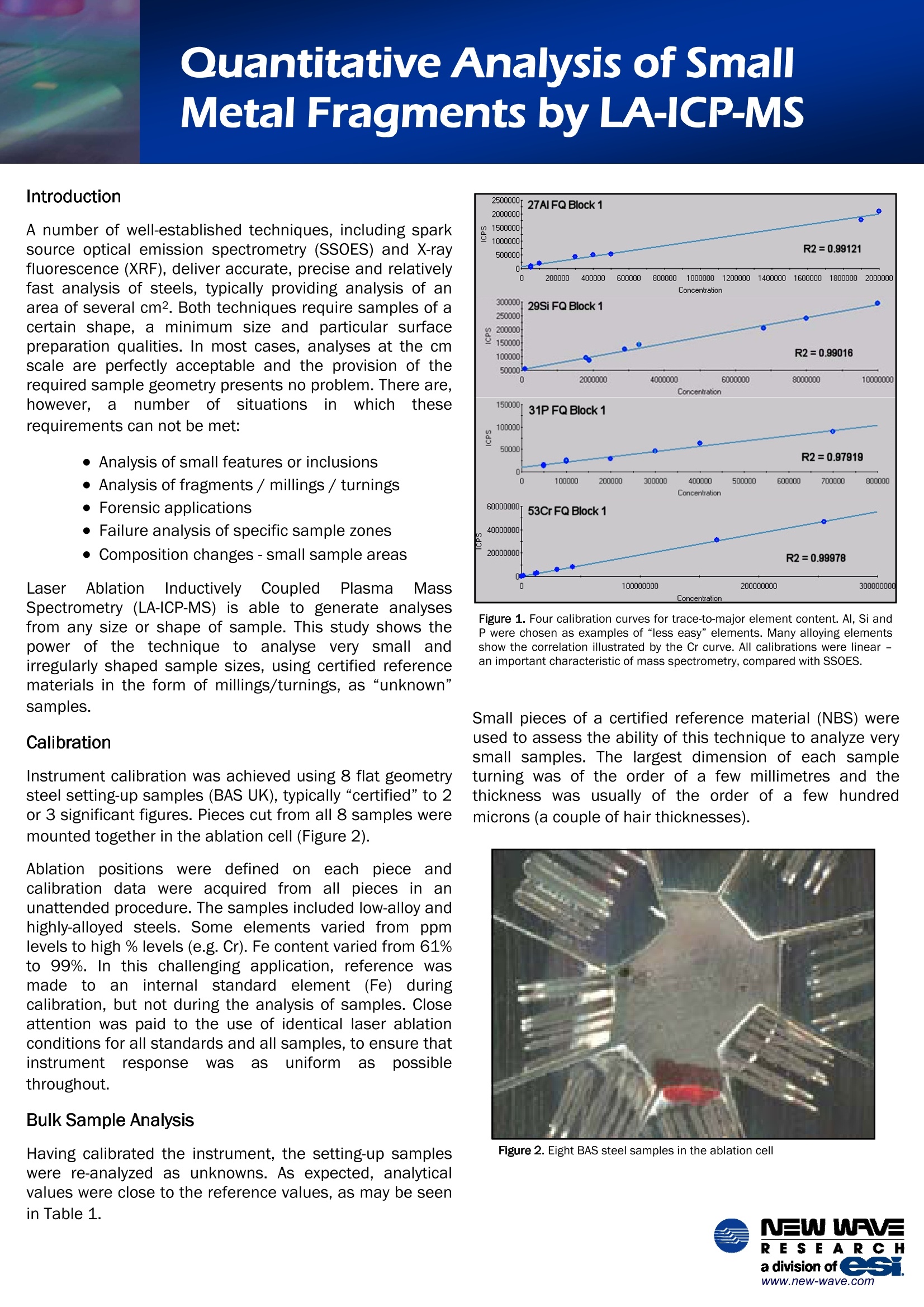
-
2/2
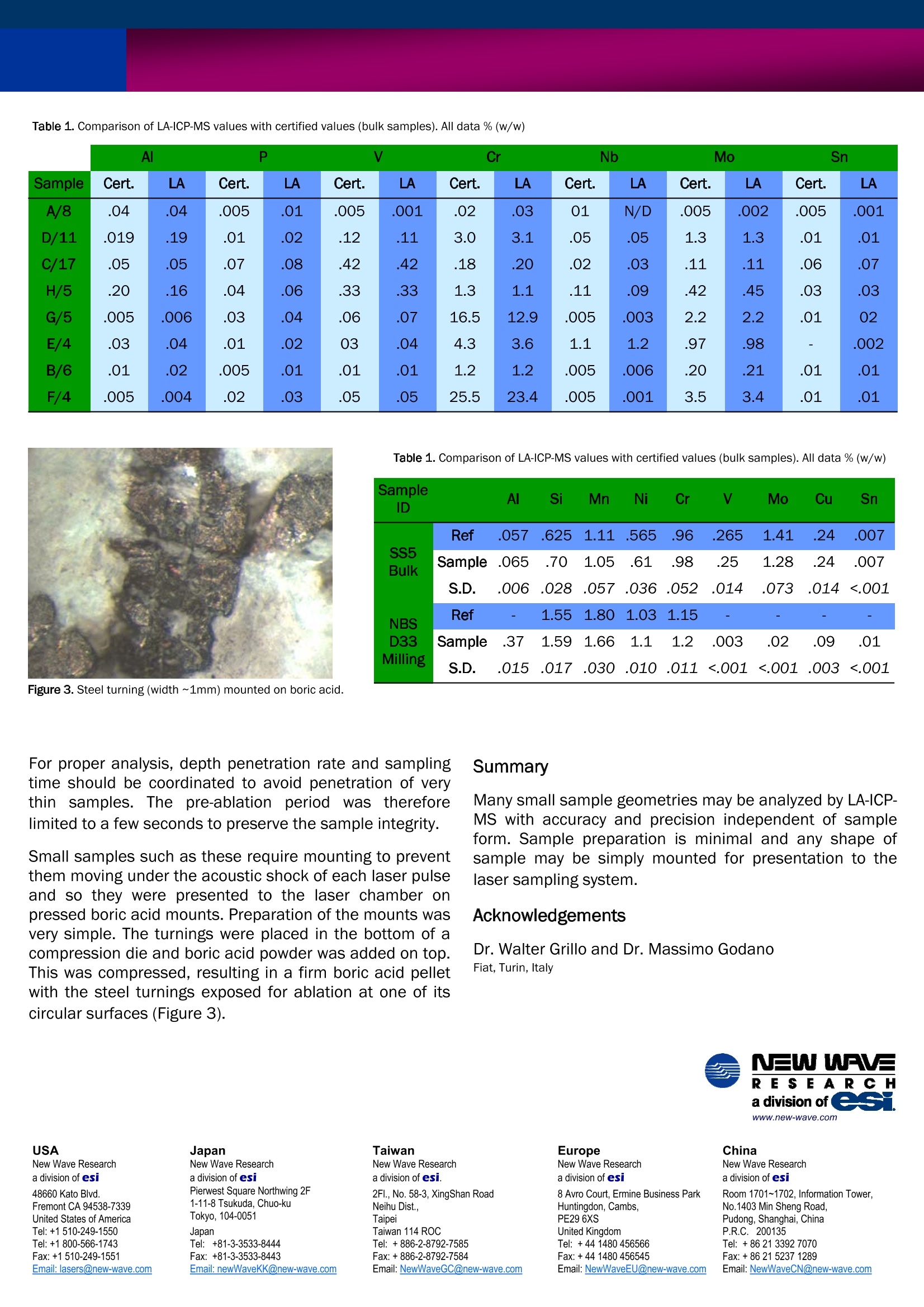
产品配置单
上海凯来仪器有限公司为您提供《金属小碎片中定量分析检测方案(激光剥蚀进样)》,该方案主要用于其他中理化分析检测,参考标准《暂无》,《金属小碎片中定量分析检测方案(激光剥蚀进样)》用到的仪器有ESL213 灵活的激光剥蚀系统。
我要纠错
推荐专场
相关方案


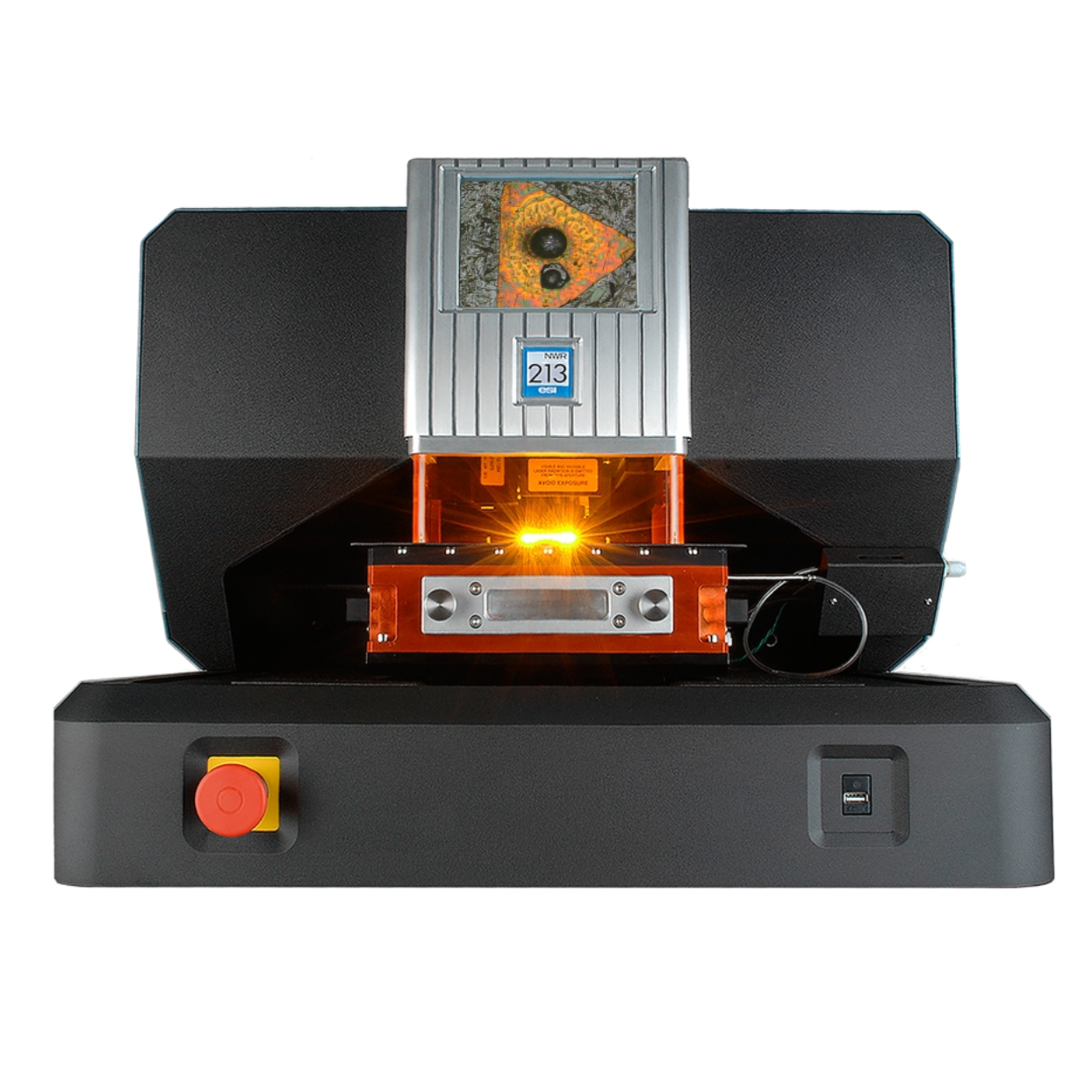
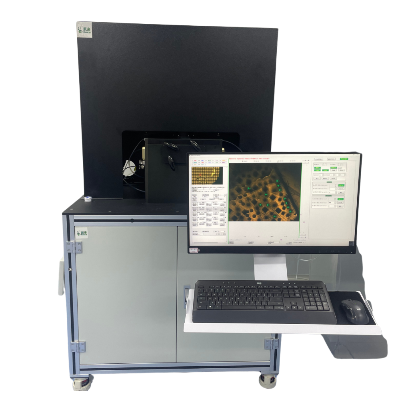

 咨询
咨询



